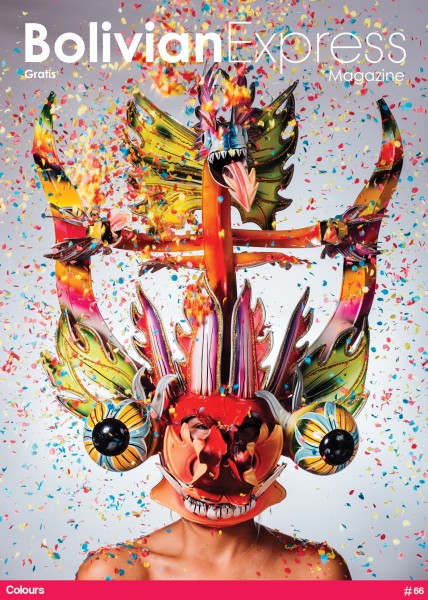
I can’t count how many times I’ve seen it. Or maybe a better word is experience it. Whether bouncing in the crowded seats of a late bus from the altiplano or in the back of a taxi on my way home from an early-morning flight that just landed in El Alto, pre-dawn is the prime time to arrive in La Paz.
In those early-morning hours, there is a black blanket over the valley, hiding Illimani behind its thick curtain. You want to think the city is sleeping, but continued traffic and city sounds tell your hazy mind otherwise. But what gets you is the golden aura of La Paz, the orange, sodium glow that covers the valley in its unique nocturnal hue. The colour is a reminder of the clay bricks that make up the buildings of this city in daylight, but at night the colour has a different, soothing energy. As you approach the ledge of El Alto to begin the winding plunge down into the city’s depths, the lights of El Prado call you down, as the steep slope of Villa Fatima watches from across the valley. Down below to the right, you can make out the similar glimmer from Obrajes and beyond, Zona Sur giving off its own particular colour.
In these moments, no matter how tired I am, how dirty, how uncomfortable, I open my eyes wide to take in the fiery colour of nighttime La Paz.
In this issue of Bolivian Express, we were inspired by these breathtaking moments, which so many of us have experienced living and working here. In day and night, colour takes on special meanings in Bolivia. From the grand swaths of purity in Sucre, Bolivia’s White City, to the rainbows of colors on towering murals breaking the greys and browns in the far reaches of El Alto, colours here continuously surprise. We see them in the blackened fingers and dark clothing of La Paz’s masked lustrabotas, and in the painted faces of its all-too-lovable clowns. And perhaps most notably, the artisans of Bolivia deploy colors to imbue specific meanings in their works, from elaborate, handmade textiles to ostentatious masks and costumes used in traditional dance. And with all the activity throughout the country, from the millions of people here living lives and changing its landscapes to the swaths of tourists visiting its incredible sites year after year, it is people who certainly bring the most colour to Bolivia.
My frequent nighttime rides down into La Paz will always be my strongest association with colour in Bolivia, but this country’s many shades and hues continue to enrich life here. Wherever one wanders, the colours are the first details to note. They contain secrets that can unlock so much of the mystery here, waiting to be understood. But for me, whether I have been gone for two days or two years, that hazy golden ride down the ridge from El Alto to La Paz conjures wonderful feelings inside me. And it reminds me of why I call this place home.
Photos: Melody Chan
The Shoe-Shine Boys of La Paz.
In bright, crowded streets, La Paz’s lustrabotas wear dark clothes to blend in. It’s much too sunny for heavy black masks and jackets, but they choose the heat of anonymity over exposure, protected from discrimination and recognition while in their dark colors, their disguise. They are shoe shiners, carrying around small wooden boxes filled with polishes and smells that accompany their cries to lure in passersby.
Twenty years old, he likes to walk up and down El Prado, parking his wooden stool and sitting in front of each customer. He’s lively and vibrant, hugging his fellow masked brothers and dancing with street performers along the way. He greets the avenue like a familiar friend, having spent 10 years working and growing in the area.
He keeps his job a secret from friends and family. Only his eldest brother and his father know that he walks from El Alto after classes to pick up his supplies and mask from where he stores them overnight. With the coins he earns he attends university, with bright plans for the future: he will graduate and start looking for full-time work in a mechanic shop.

 Download
Download





















